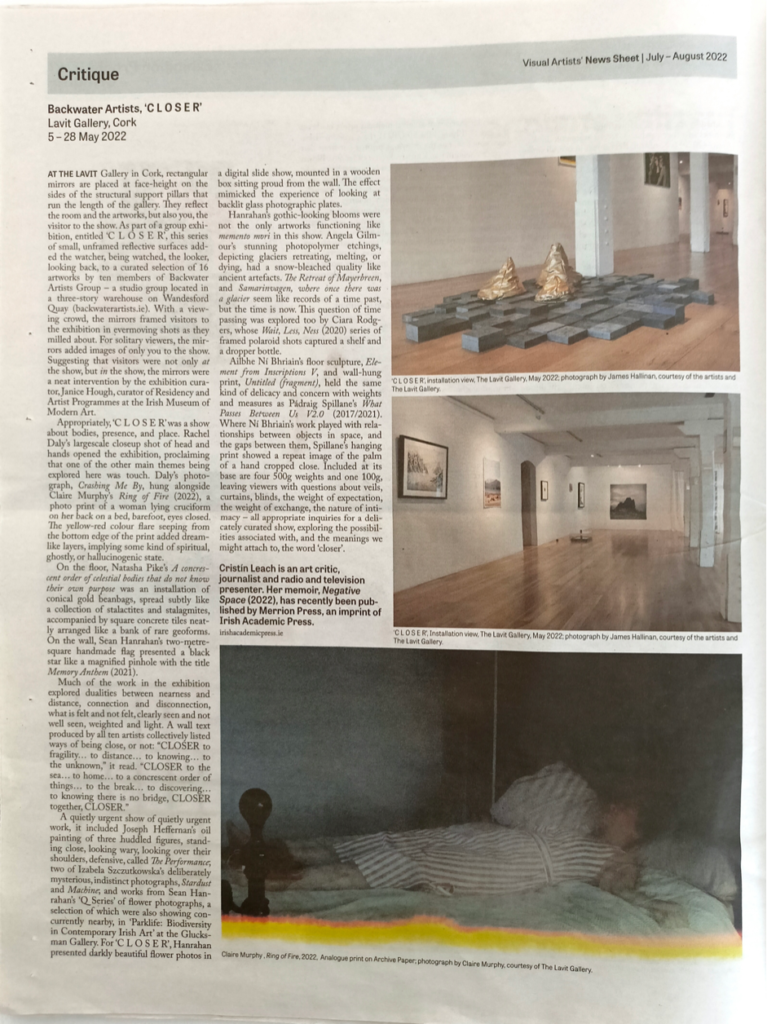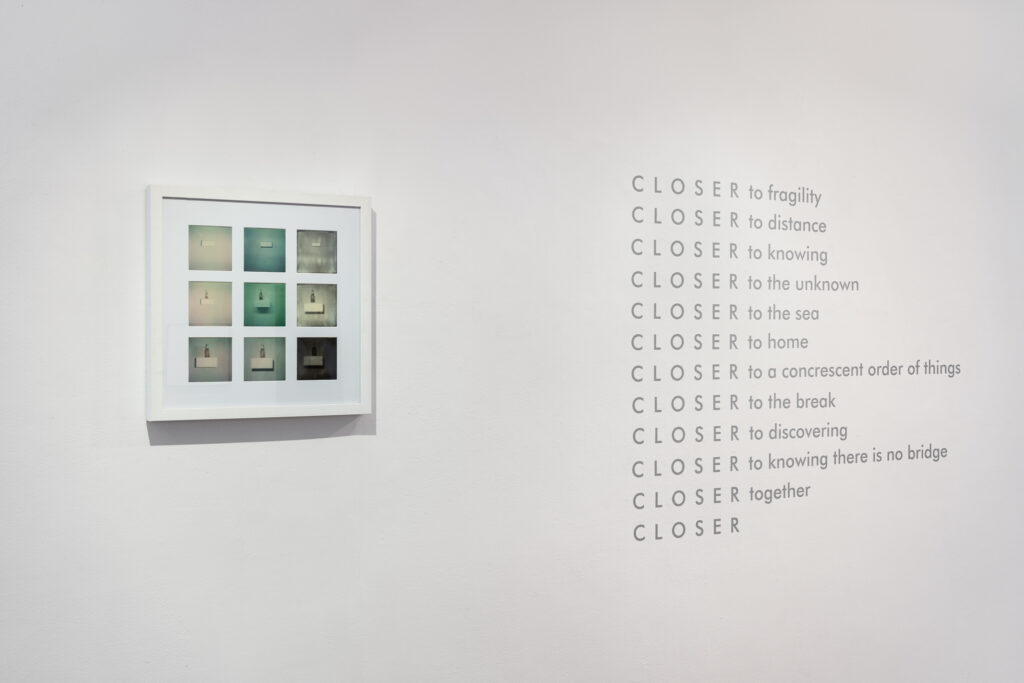The main feature of a net is that every point can be connected with every other point, and, where the connections are not yet designed, they are, however, conceivable and designable. A net is an unlimited territory. (Umberto Eco, Semiotics and the Philosophy of Language, 1984.)
Like many people who remember ecstatically plunging into the sprawling web of the 1990s and early 2000s, the distinctly shrill and robotic buzzing and beeping sounds of a dial-up modem is an earworm that remains burrowed into my skull. The noise itself — the little startup song — is a sonification of the “handshake protocol” as your modem connects to another on the network. The term serves as an anthropomorphisation of contact between non-human agents, communicating to the user an image of a tactile and courteous greeting between friends — of flesh touching flesh — rather than the emotionless transfer of data between machines. Once successfully logged on, this sound would appear to subside; however, if someone were to unknowingly pick up the phone receiver on the same line they would be able to listen in on the still present murmurs of a gleeful telematic embrace.
Over two decades on the Internet — in its infrastructural support of hardware and software, as well as its cultural position as a decentralised-centre of economic, political, and social power — is a very different entity and experience. It is no longer simply a curious virtualisation (enabling the transfer of data over great distances in minuscule timeframes) serving only the needs and desires of the tech industry and enthusiasts, but has now become a fundamental resource and interlocutor in the running and operation of the modern world. Logging on was previously an explicit choice; that is, it was a discrete event and was therefore partially severed, especially in a technical manner, from the larger category of one’s life. But today online connectivity is suffocating in its omnipresence; it is everywhere and all the time. And so, the perceptual sonic remnants of the handshake protocol have receded into the background, as our previously fleeting correspondence with the web has been transformed into an unbroken and constant dialog.
The thrill of making contact with another somewhere across the globe has been replaced by a fetid exhaustion which manifests as a seeking out to disconnect from the network. Throughout the extended duration of societal lockdowns made necessary by the corona virus pandemic, closeness with the outside was maintained, for many, principally through access to the Internet and its associated media and technological structures. The network was good and it served its purpose; and during this time we became more deeply embedded, and therefore reliant, upon it. Accordingly, in the aftermath there has been a widespread desire to not only pursue forms of experience which are perhaps less than amenable to virtualisation (hapticity and physical space are two examples here), but also a tendency to reflect upon the notion of connectivity itself.
Such a thematic is one of the concerns of C L O S E R, curated by Janice Hough, which consists a collection of works from Backwater studio artists produced in and around the pandemic period. Across the selection a common thread of intimacy and entanglement emerges as each of the different works probe our connectivity to various human and non-human, as well as organic and inorganic, systems, situations, and phenomena. Whilst the concept of a network is now irredeemably bootstrapped to technical structures and mechanisms linked to life in a post-digital world, as Manuel Castells reminds us: “Networks are not specific to twenty-first-century societies or, for that matter, to human organization.”1 They are, in their most fundamental form, a series of interconnected points, or nodes, linked together in order to facilitate the processing and flow of information. The information herein may consist of numbers or words, but also sounds, images, feelings, performances, objects, or energy. Basically anything that can be transmitted or transferred between two or more entities.
Networks are, and our location and involvement within them is, slippery, as the immediacy of contact between us and the various nodes (technical, natural, or otherwise) do not reveal themselves directly to human perception. Take, for instance, Claire Murphy’s photograph Ring of Fire (2022) which depicts a spread-out subject seemingly surrounded by a ghostly presence. Whilst located within the familiarity of a bedroom interior, the image, with its heavy analog artifacting, is unreal and distanced from the regularity of everyday vision. The work communicates a haunting by some unknowable force and is suggestive of assemblages of influence that lay beyond the remit of typical representation. It invites closeness — quite literally beckoning the viewer towards its surface in order to get a clearer picture — yet the material reality of the spectral enclosure it portrays is one which cannot be easily grasped by our empirical senses; instead it gestures towards a sensation of closeness which must be felt.
Other pieces, such as Séan Hanrahan’s Q-Series (2018-2022) and Angela Gilmour’s The Retreat of Mayerbreen (2021) and Samarinvågen (2021) more explicitly approach our relationship with non-human networks. Both sets of work take nature as their conceptual fulcrum, utilising its representation — contrasting in the delicate intimacy of Hanrahan’s photographs and the austere sublime of Gilmour’s etchings — in order to reevaluate our impact on and role within larger ecological systems. One of the most longstanding remnants of European modernity is the ideological tendency to situate humans as the sole, or at least principle, sites of agency on Earth. “Nature” is commonly portrayed as a series of systems whose operations, as complex as they may be, lay fundamentally severed from the reality of human affairs. Taken to be inert matter is useful if the end-goal is simply to strip the Earth of its resources in order to continue the accelerating growth of capital, but perhaps less so if the intention is to live and preserve the various lifeforms, human or otherwise, of the planet.
Donna Haraway has deployed the phrase sympoiesis — a refactoring of the word autopoiesis which refers to a system capable of maintaining and replicating itself — in order to emphasise how complex and dynamic systems always comprise a whole whose various parts are “making-with” one another.2 Haraway’s position is to highlight the interactions and stances we have and hold toward non-human organic life, but the basic contours of the argument can squeezed and stretched in order in order to rethink relationality across human, non-human, natural, and machinic terrain. That is, to acknowledge our enmeshment within various entanglements (ecological, technological, social, etc…) is to confront the ways in which our relationship to the world is at all times predicated on an endless series of connectivities, with agency (of varying kinds and degrees) distributed along all points in the network.
An inherent paradox of the post-Internet era is the manner in which near instant and constant access to one another simultaneously generates feelings of detachment and alienation. If you’re caught in a net — and if it’s wide enough — you don’t see or even perceive it; because it’s just there and you’re in it. One of persisting legacies of the pandemic will hopefully be an impetus that leads to the formation of new constellations of thought that posit alternative mutations and perspectives on how we relate to one another and the greater world. Whether these take shape as a reevaluation of community, comradeship, networks, or sympoiesis is impossible to foretell, but regardless the role of art should be to help map the trajectories of these speculative potentialities.
Laurence Counihan

